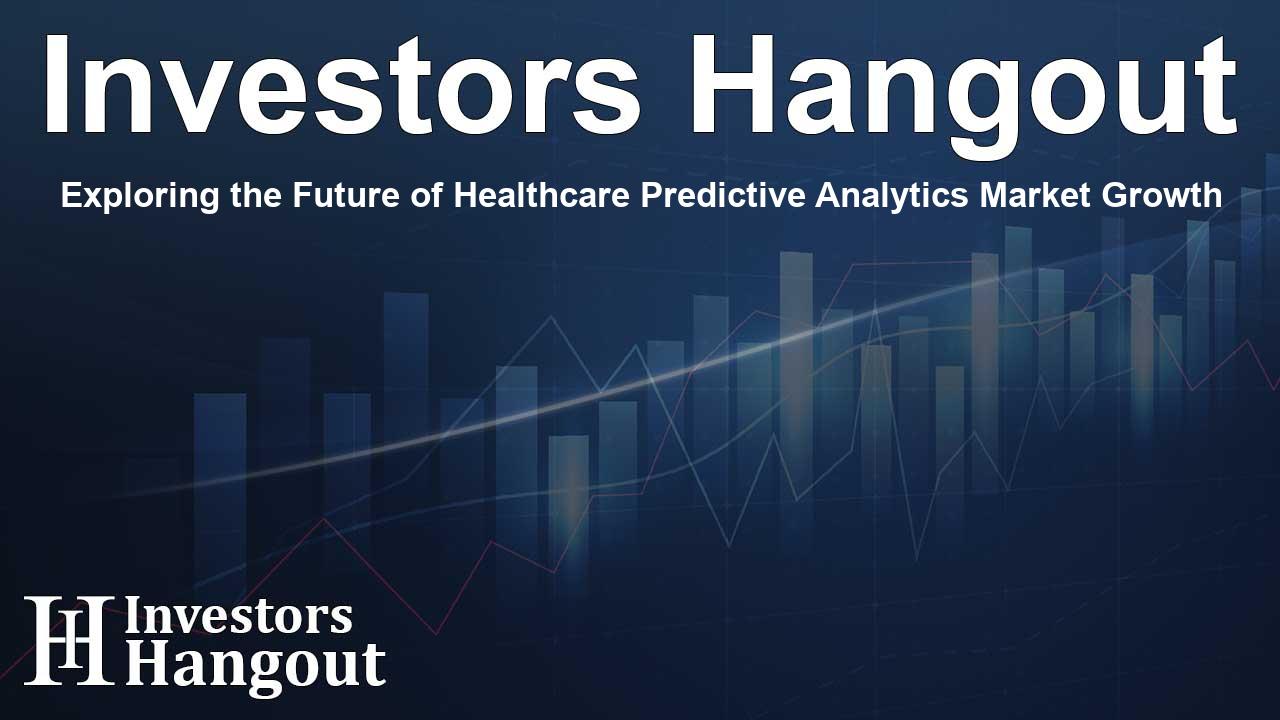Exploring the Future of Healthcare Predictive Analytics Market Growth

Future Growth of the Healthcare Predictive Analytics Market
The global healthcare predictive analytics market is poised for remarkable growth, projected to increase significantly from its 2024 valuation of USD 18.13 billion. By 2034, it is estimated to reach approximately USD 156.36 billion. This surge reflects a compound annual growth rate (CAGR) of around 24.04% as reported by industry research, emphasizing a robust demand for enhanced analytics in the healthcare sector.
Key Factors Fueling Market Expansion
Driven by technological advancements and an increasing focus on operational efficiency, the market is thriving. The continuous evolution of analytics tools supports healthcare providers in optimizing resources, improving patient outcomes, and streamlining operations. More specifically, predictive analytics empowers providers to analyze vast data sets, leading to better decision-making and cost management.
The Influence of Data on Healthcare Outcomes
Healthcare predictive analytics leverages data analysis techniques to identify potential health risks, allow for tailored treatments, and enhance overall patient care. By analyzing both historical and real-time data, healthcare professionals can anticipate complications, improve resource allocation, and implement proactive interventions. These capabilities not only benefit patient outcomes but also significantly reduce healthcare costs.
Emerging Trends in Healthcare Predictive Analytics
Several trends are reshaping the healthcare predictive analytics landscape:
- Advanced Analytical Technologies: The integration of artificial intelligence and machine learning plays a crucial role in refining predictive models, enabling faster and more accurate data processing.
- Population Health Management: There is a growing emphasis on population health management, with predictive analytics helping to identify high-risk groups and improve community health outcomes.
- Cost Efficiency Initiatives: Organizations are increasingly focused on reducing costs and enhancing operational efficiency through analytics, streamlining processes, and optimizing the use of resources.
Regional Market Insights
In 2024, North America dominated the healthcare predictive analytics market, claiming approximately 49% market share. This dominance can be attributed to advanced healthcare infrastructure, widespread adoption of predictive analytics tools, and a strong focus on personalized medicine strategies. The presence of key players such as IBM and Oracle further consolidates the region's leadership in the market.
Simultaneously, the Asia Pacific region is anticipated to experience substantial growth in the coming years, driven by increasing healthcare expenditures, technological advancements, and government initiatives. The region is witnessing rapid expansions in areas such as telemedicine and wearable devices, both of which enhance the capabilities of predictive analytics.
Challenges Facing the Market
Despite the growth prospects, the healthcare predictive analytics market faces several challenges, including data privacy concerns, high implementation costs, and the need for highly skilled personnel to analyze and manage data effectively. Furthermore, interoperability issues amongst various healthcare systems can hinder adoption rates, impacting the overall effectiveness of analytics solutions.
Market Segmentation
The healthcare predictive analytics market comprises various segments, including:
By Application
- Financial Management
- Population Health Management
- Operational Management
- Clinical Applications
By End-Use
- Healthcare Providers
- Payers
- Life Sciences Organizations
Looking Ahead: Strategic Implications
As the healthcare predictive analytics market evolves, key players must prioritize strategic partnerships and technological innovations. The ongoing demand for personalized medicine and substantial investments in healthcare analytics signify a robust market landscape. Organizations looking to improve their operational strategies should consider investing in analytics capabilities, allowing them to enhance patient engagement and maximize outcomes.
Frequently Asked Questions
1. What is the projected growth rate of the healthcare predictive analytics market?
The market is projected to grow at a compound annual growth rate (CAGR) of approximately 24.04% from 2024 to 2034.
2. What factors are driving the demand for predictive analytics in healthcare?
Key factors include the need for cost reductions, operational efficiency, advancements in technology, and evolving healthcare data.
3. Which regions are leading in the healthcare predictive analytics market?
North America leads the market, followed closely by the Asia Pacific region, which is expected to experience the quickest growth.
4. What challenges does the healthcare predictive analytics market face?
Challenges include data privacy concerns, high implementation costs, and the need for skilled personnel to manage and analyze data.
5. How is predictive analytics transforming patient care?
By providing insights into patient data, predictive analytics allows healthcare providers to identify risks, tailor treatments, and improve resource allocation, thus enhancing overall patient care.
About The Author
Contact Dominic Sanders privately here. Or send an email with ATTN: Dominic Sanders as the subject to contact@investorshangout.com.
About Investors Hangout
Investors Hangout is a leading online stock forum for financial discussion and learning, offering a wide range of free tools and resources. It draws in traders of all levels, who exchange market knowledge, investigate trading tactics, and keep an eye on industry developments in real time. Featuring financial articles, stock message boards, quotes, charts, company profiles, and live news updates. Through cooperative learning and a wealth of informational resources, it helps users from novices creating their first portfolios to experts honing their techniques. Join Investors Hangout today: https://investorshangout.com/
The content of this article is based on factual, publicly available information and does not represent legal, financial, or investment advice. Investors Hangout does not offer financial advice, and the author is not a licensed financial advisor. Consult a qualified advisor before making any financial or investment decisions based on this article. This article should not be considered advice to purchase, sell, or hold any securities or other investments. If any of the material provided here is inaccurate, please contact us for corrections.
